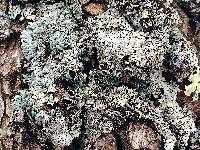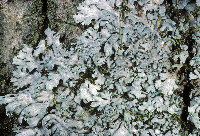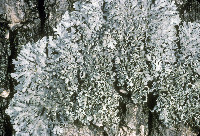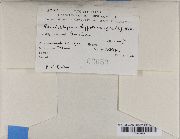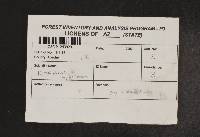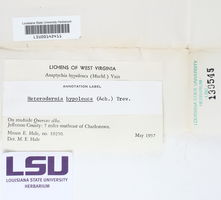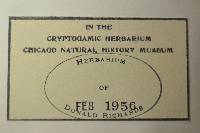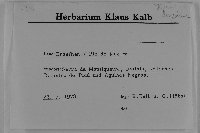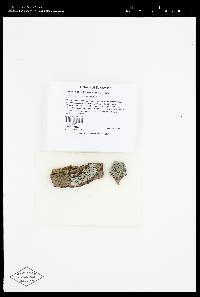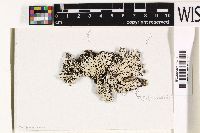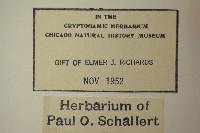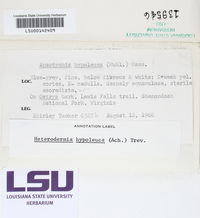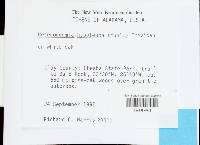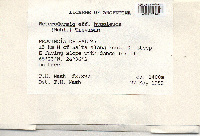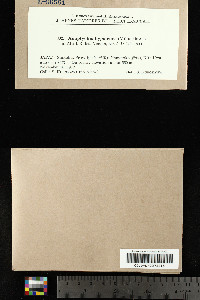
Consortium of Lichen Herbaria
- building a Global Consortium of Bryophytes and Lichens as keystones of cryptobiotic communities -
- Home
- Search
- Images
- Species Checklists
- US States: O-Z >
- US National Parks
- Central America
- South America
- US National Parks
- Southern Subpolar Region
|
|
|
|
Family: Physciaceae
Cupped Fringe Lichen
[Anaptychia hypoleuca (Muhl.) Vain., moreAnaptychia hypoleuca f. contractosorediosa Sambo, Anaptychia hypoleuca f. granulosa Kurok., Anaptychia hypoleuca f. hypoleuca (Muhl.) A. Massal., Anaptychia hypoleuca f. minutula Räsänen, Anaptychia hypoleuca f. rubescens Räsänen, Anaptychia hypoleuca var. fulvescens Vain., Anaptychia hypoleuca var. hypoleuca (Muhl.) A. Massal., Anaptychia hypoleuca var. rottboellii Vain., Heterodermia hypoleuca (Ach.) Trevis., Heterodermia hypoleuca f. hypoleuca (Ach.) Trevis., Heterodermia hypoleuca var. divergens Trass, Heterodermia hypoleuca var. hypoleuca (Ach.) Trevis., Parmelia hypoleuca Mühl., Parmelia hypoleuca f. coralloidea Müll.Arg., Parmelia hypoleuca f. hypoleuca Müll.Arg., Physcia hypoleuca (Mühl.) Tuck., Physcia hypoleuca var. hypoleuca Tuck., Physcia hypoleuca var. tremulans Müll.Arg., Physcia speciosa var. hypoleuca (Mühl.) Nyl., Pseudophyscia hypoleuca (Mühl.) Hue] |
Nash, T.H., Ryan, B.D., Gries, C., Bungartz, F., (eds.) 2002. Lichen Flora of the Greater Sonoran Desert Region. Vol 1. Thallus: foliose, irregular to orbicular, up to 5 cm diam. (forming colonies up to 15 cm diam.), loosely adnate with discrete, repeatedly dichotomously or irregularly lobate lobes: up to 2 mm broad, usually around 1 mm, irregularly or dichotomously branched; tips: not ascending, with small adventive lateral lobules, eciliate upper surface: greenish white or gray to dark gray or brownish, not or very weakly pruinose; soredia and isidia absent upper cortex: prosoplectenchymatous medulla: white lower cortex: absent lower surface: white to purple or almost black; rhizines: marginal, pale to black, ± abundantly branched Apothecia: ± common, variable in size, substipitate, up to 5 (-10) mm diam., sometimes cupshaped, shortly stipitate or sessile with lobulate margin; disc: brown to dark brown asci: cylindrical to subclavate, 8-spored ascospores: brown, l-septate, ellipsoid, Pachysporaria type, with or without sporoblastidia, (22.5-) 23.5-30.5 (-35.5) x (11-) 12.5-16 (-17) µm Pycnidia: ± common conidia: bacilliform, 4-5 x 1 µm [but Kurokawa (1962) reports 1-2 x 0.3-0.5 µm] Spot tests: cortex K+ yellow C-, KC-, P+ yellow; medulla K+ yellow or K+ yellow to orange, C-, KC-, P- or P+ yellow to orange Secondary metabolites: cortex with atranorin and chloroatranorin; medulla with atranorin, zeorin, leucotylin and ± norstictic acid. Substrate and ecology: growing on bark in fairly moist but open conditions World distribution: southern North America, Africa and eastern Asia Sonoran distribution: relatively common in SE Arizona and the Sierra Madre Occidental region of Chihuahua, Sonora and Sinaloa and on the mountains of the southern tip of Baja California Sur. Notes: The "wooly" upper lobe-tips, the ecorticate lower side, discrete lobes with small adventive lobes and lobulate apothecia identify the species. It could be characterized as the fertile counterpart of H. japonica. |
|
|
|
Powered by Symbiota



